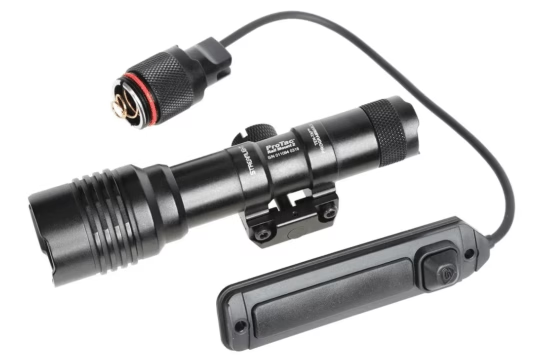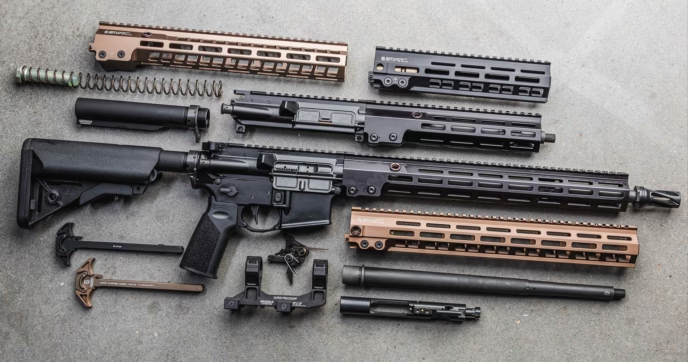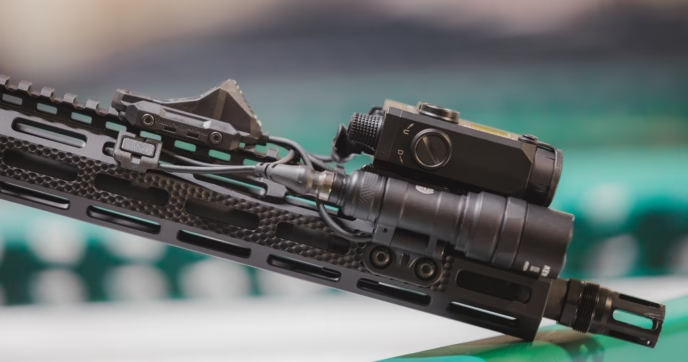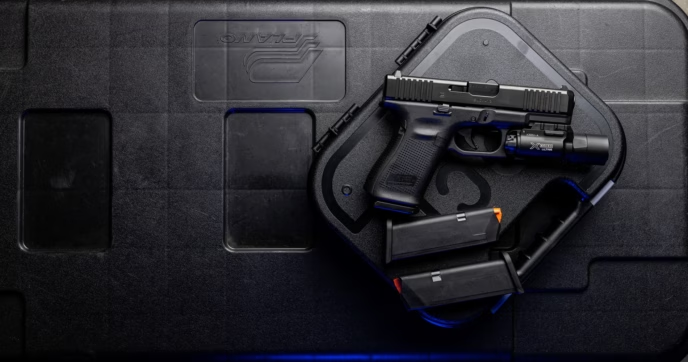In low-light environments, or at night, illumination is paramount for proper target identification. While this can easily be solved with a simple flashlight, the adaptability of a dedicated weapon light is hard to beat.
By design, weapon lights provide a considerable tactical advantage to your rifle setup, offering superior ergonomics whilst allowing you to keep your off hand on your rifle to maintain control of it. Because of the benefits they offer, there are a lot of light options available for the AR-15, and despite weapon lights coming in a multitude of shapes, sizes, and power intensities, they have two primary activation types: push button and remote switch.
Although choosing one over the other may seem like an easy decision, both light activation methods offer completely different levels of performance. Below, we’re looking at each possibility to see how they perform.
Push Button Activation
Push buttons are the simplest activation method available for weapon lights. These buttons are most often built into the tail cap of the light, offering straightforward installation and a simplistic design.
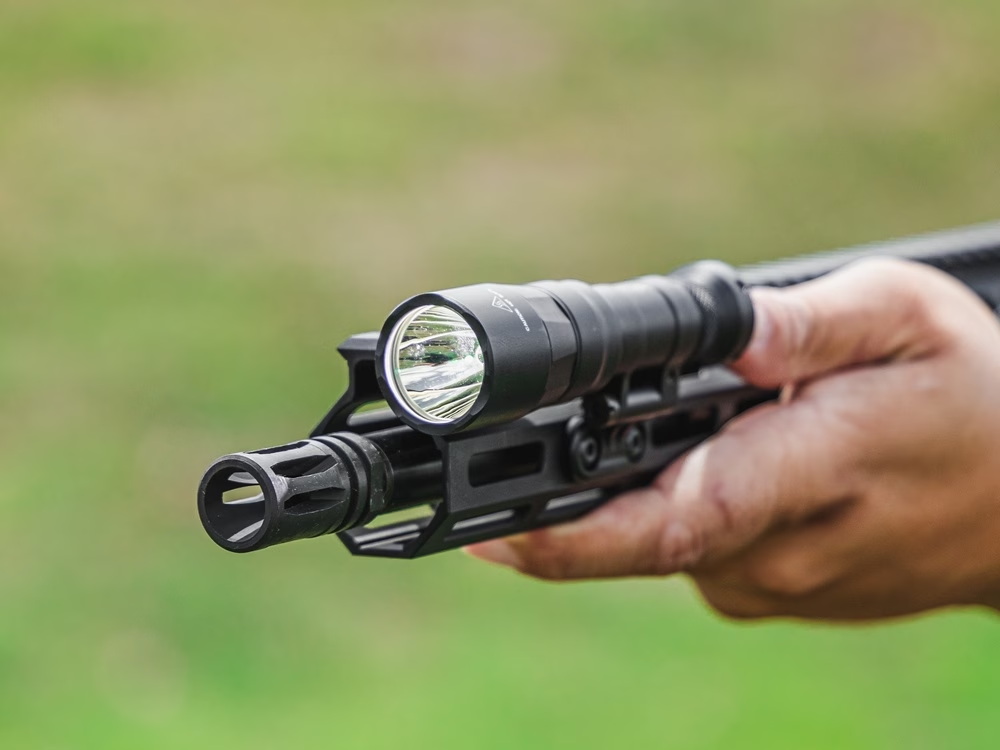
Push Button Pros
Being the simplest light activation method available, there aren’t any other external components needed like switch mounts and cables. This gives them a minimalistic design that frees up more of your rifle’s handguard, while also lessening the risk of snagging on other gear. They’re also a more durable choice too—generally speaking, fewer components mean fewer potential points of failure, so if durability is a primary concern for you, push buttons are a solid option.
Another key advantage push button lights have is their lower risk of accidental activation. We touch more on this in our later section on remote switches, but there’s a higher risk of accidental activation when running one. In contrast, push button tail caps require a deliberate click to be activated, plus, since the button is located directly on the light itself, it’s unlikely that you’ll accidentally activate it.
Finally, push button tail caps are, by far, the most budget friendly choice. For instance, a SureFire Z68 push button tail cap typically costs around $25, while their replacement tail cap assembly for tape switches can cost upwards of $70+, with tape switches costing another $60 or more depending on the switch. Even further, most complete light assemblies come standard with a push button tail cap.
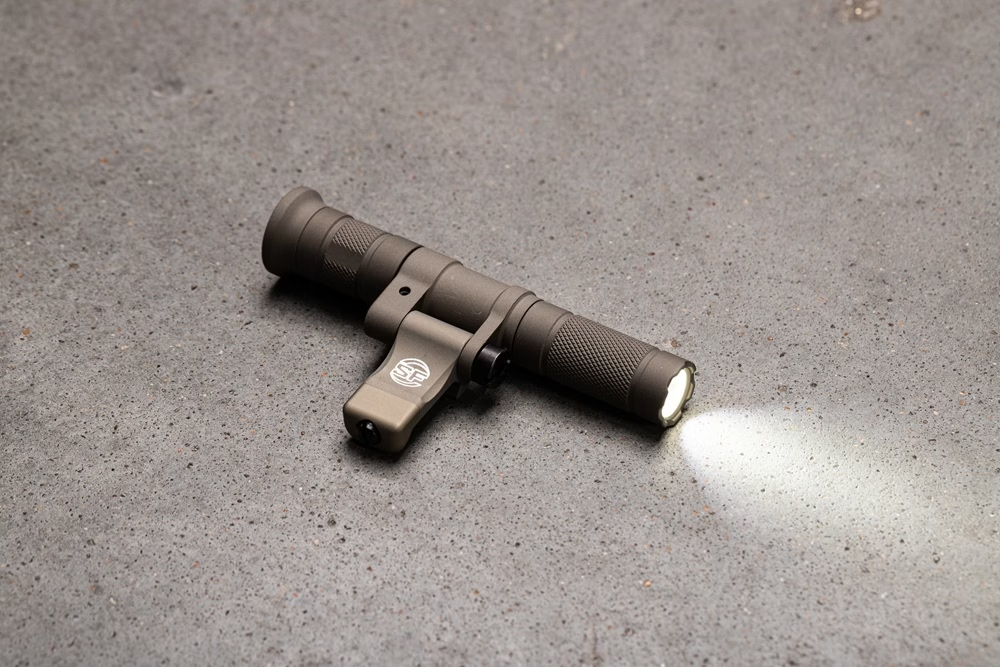
Push Button Cons
Despite their benefits, push buttons for rifle lights have their cons as well, the most notable of which are their ergonomic limitations. Compared to remote switches, push buttons don’t offer the quickest activation, since you need to use your support hand to activate the light, forcing you to shift your grip or let off the handguard entirely. While you can mitigate this by mounting the light closer to your support hand, this can cause other issues depending on the length of your handguard.
Ideally, your light needs to be mounted in a location that’s easy to reach. As we mentioned, having it mounted too far out requires you to shift your grip to activate it, but, if it’s too close to middle of the handguard, the light beam can get blocked partially, increasing barrel shadow. As such, it can be a bit of a tightrope walk to try and find the right mounting location for your light—it’s doable, but it can be tricky depending on your rifle setup.
Lastly, push buttons don’t typically have a momentary switch built into them. This is more of a nitpick than a con, but when activated, push button lights are constantly on until you turn them off. Depending on your application, you might be constantly shifting your grip to turn your light on/off so as not to drain your light’s battery.
Remote Switch Activation
Remote switches are easily one the most popular light activation methods around, with there being a lot of flashlights with pressure switches for AR-15s and other platforms. And just like push button tail caps, they have their own distinct advantages and considerations.
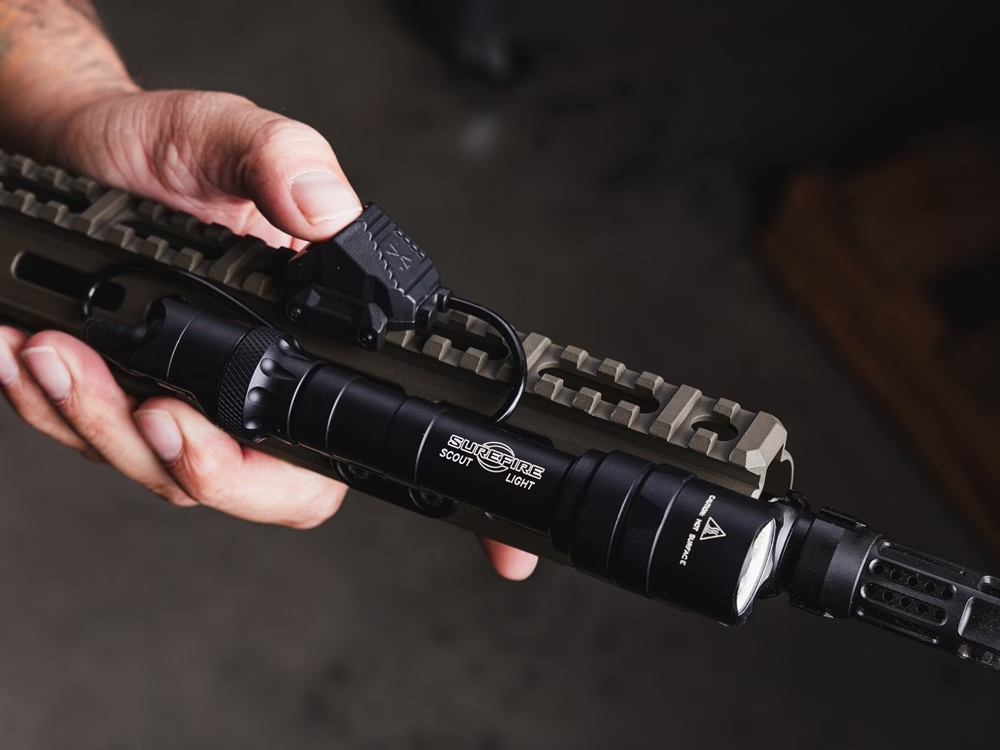
Remote Switch Pros
One of the foremost benefits of running a remote switch is their convenience and mounting flexibility. With a remote switch, you can mount the light further towards the muzzle to minimize barrel shadow and mount the switch closer to where you grip the handguard with your support hand, allowing you to easily activate the light without shifting your grip. As such, your ergonomics don’t take a hit, as you can easily move your thumb to use your light.
Even further, they offer greater control of the light itself. Although this depends on the type of remote switch you use, they generally offer both a momentary- and a constant-activation option. For instance, Surefire light options with their SR07 tape switch have both a pressure pad and a push button for constant illumination, with the same being true for other switches like the Unity AXON SYNC.
Also, another neat feature of remote switches is their ambidexterity. As we mentioned above, push button tail caps thread directly into the light body, meaning your light needs to be mounted so that it’s easily accessible by your support hand. While this isn’t necessarily an issue during normal use, it quickly becomes one if you ever need to switch to shooting with your off hand. With a top-mounted remote switch though, you’ll always have access to your light controls, regardless of dexterity. Just keep in mind that this is only true if your switch is mounted to the top of your handguard.

Remote Switch Cons
Despite their many benefits, remote switches aren’t without their cons. Although they’re certainly convenient, they can make your rifle setup more complicated since they introduce more components to it. Instead of just needing to mount your light, you’ll also need to mount the switch itself, which connects to it via a cable. Generally, more components mean more potential points of failure. Keep in mind that modern remote switches are incredibly durable, but over time, especially when used in harsh conditions, these components can/will degrade if they aren’t properly mounted and maintained.
Speaking of remote switch cables, if they aren’t secured properly, they can interfere with the use of other components mounted to your handguard, or worse, snag on something, damaging it in the process. As such cable management is crucial. Ranger bands, zip ties, and even grip tape can be a suitable option in a pinch, but for a more aesthetically pleasing option, brands like Forward Controls Design offer grip panels that have built-in cable management channels. Regardless of what method you use, it’s important to take cable management into consideration if you plan to use a remote switch.
Lastly, something else to consider is accidental activation. As we mentioned above, most remote switches have a pressure pad that allows you to activate your light momentarily. While beneficial in that this provides quick and easy activation, if you aren’t mindful of your switch location when gripping your rifle, you can unintentionally activate it. Still, this can be easily overcome with training, but if you’re new to running weapon lights, it’s something important to bear in mind.
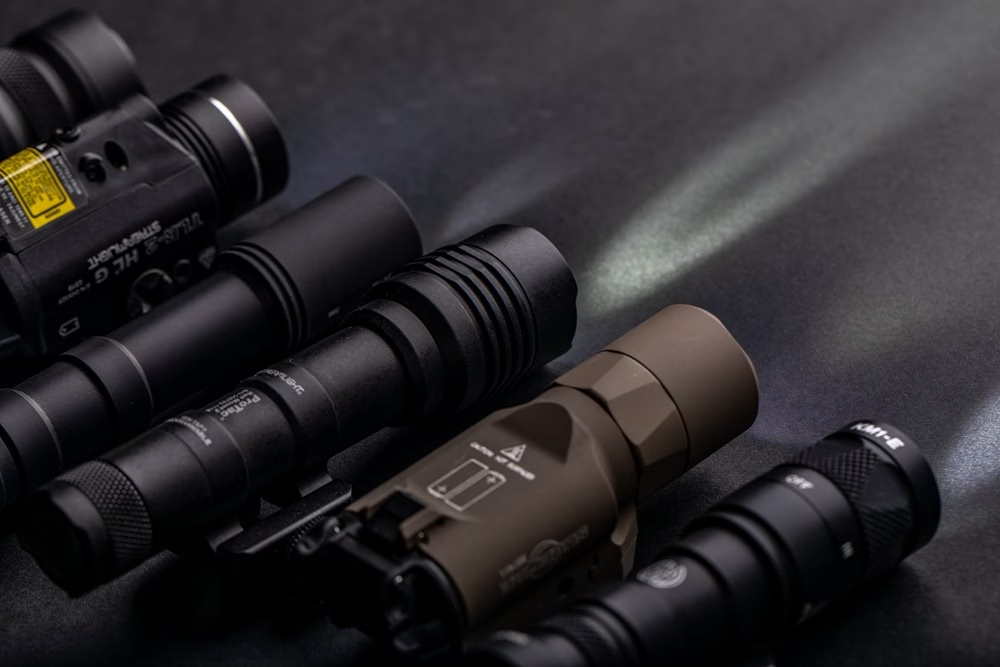
Which is Best?
Each light activation method caters to unique needs and preferences, so it’s impossible to declare one single possibility as the best. That said, it’s more-than-possible to narrow down your options to find out which is best for you.
For simplicity and added durability, a rifle light with a push button is the way to go. Being directly attached to the light body, they offer the most structural rigidity and aren’t as easy to activate accidentally, though they do compromise a bit in terms of ergonomics.
For more mounting flexibility and overall convenience, remote switches provide better ergonomic control over your light and can even include momentary and constant illumination settings. Still, the switch and cable can wear out over time, and the cables need to be effectively managed to make sure they aren’t in the way of any other gear.
Either which way you go, there are a plethora of high-quality light options to choose from, with brands like Surefire, Streamlight, and Arisaka being just a few of what’s available. And each of them offer various lights, light parts, switches, and even both picatinny and M-LOK light mount options.
Conclusion
In low-light environments, weapon lights are an essential piece of gear, allowing you to easily illuminate your surroundings for proper target identification, while still being able to have full control of your rifle. And if you want to add one to your AR-15, there’s no shortage of top-tier options to choose from.
Still, despite the vast assortment of weapon lights to pick from, choosing how you want to be able activate your light is still a crucial decision. As we said above, push button tail caps are the simplest option, coming with a low profile, streamlined design, but they fall short in terms of ergonomics since you need to take your off hand off the rifle to activate it in most instances.
Remote switches offer the best ergonomics as they’re not only easy to activate, but capable of being mounted in more advantageous locations along the handguard. However, it’s important to note that if they aren’t properly maintained, remote switches and cables can wear out over time, and the cables themselves can potentially be a hinderance if not adequately secured.
At the end of the day though, both can be a more-than-effective option that can effectively solve your illumination needs. And if the one you’ve chosen meets your needs and is practical for your personal setup, you’ll have no issues running a light on your AR-15.
